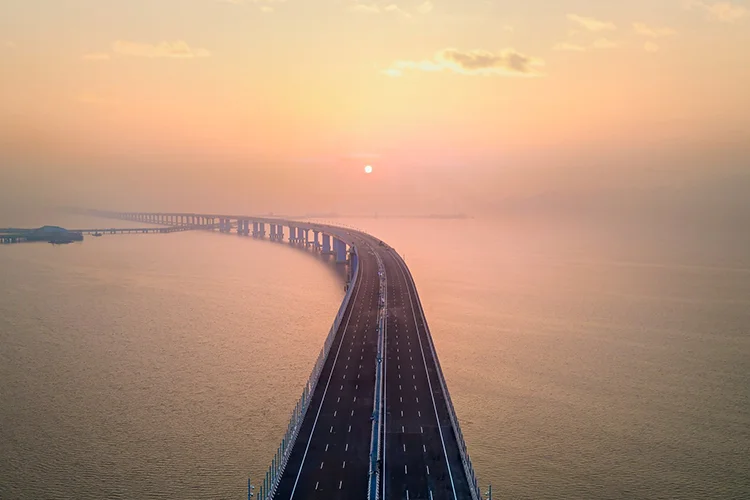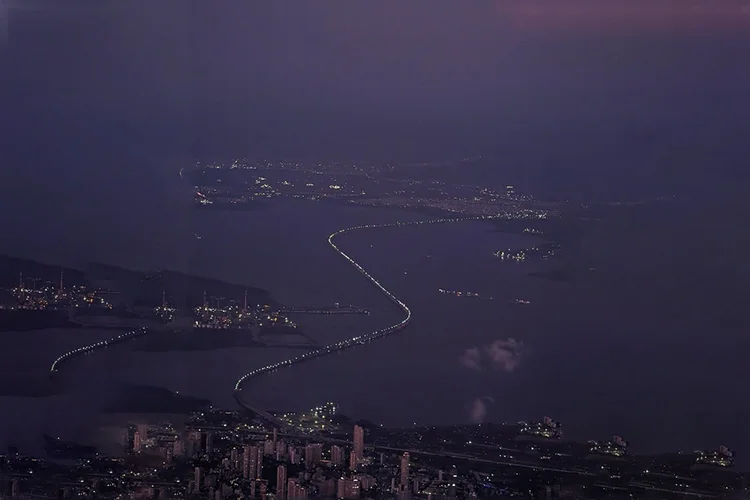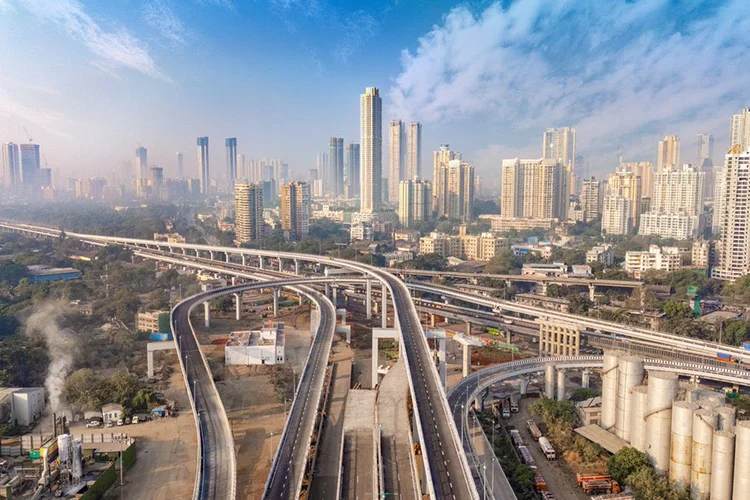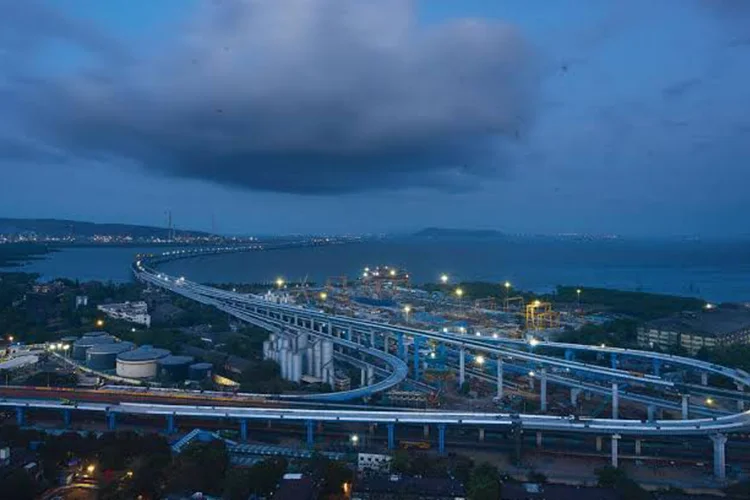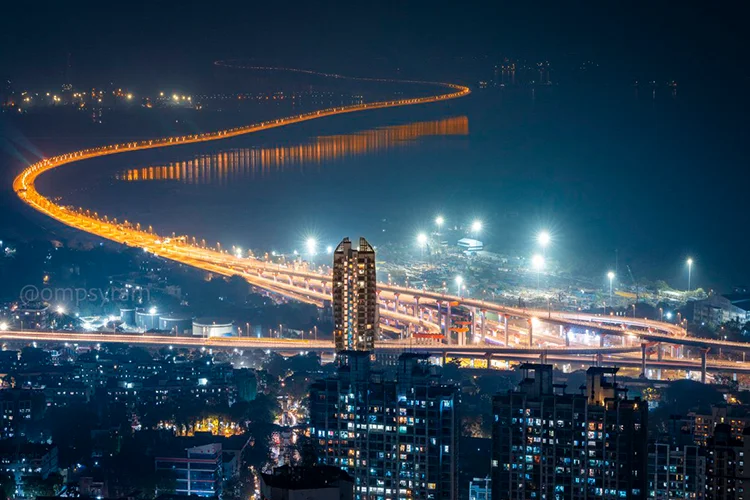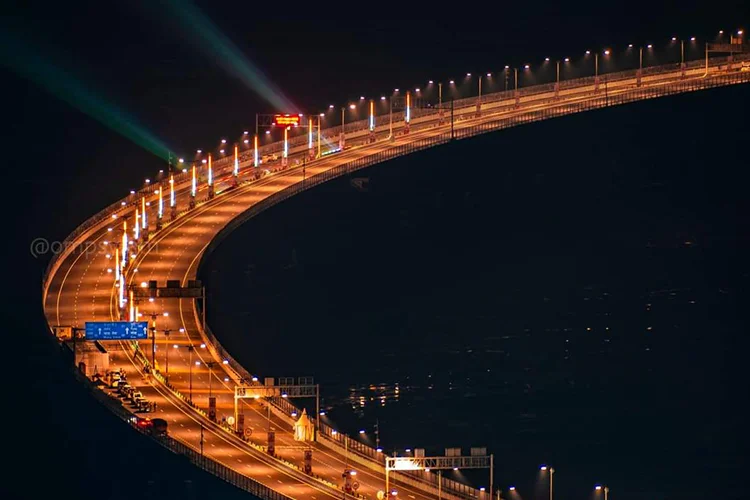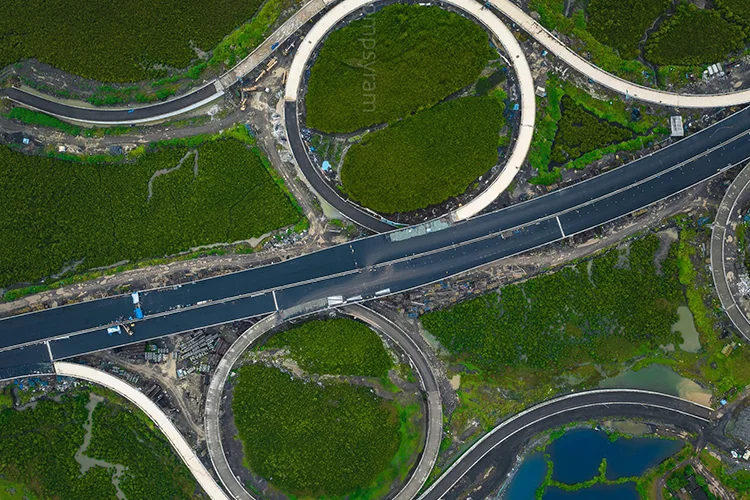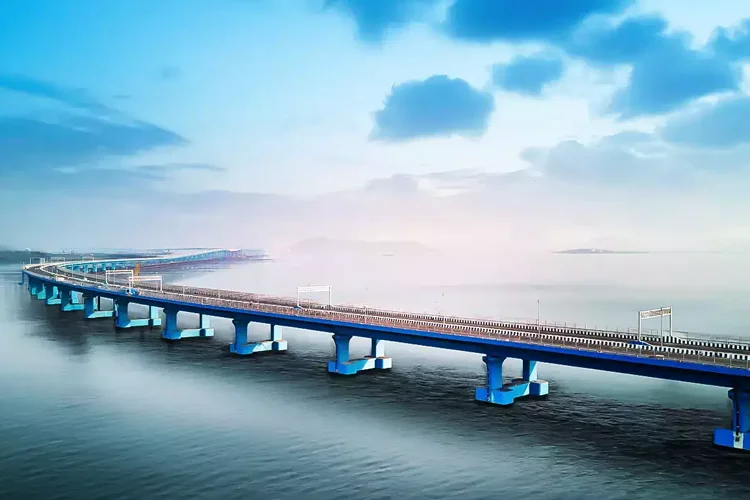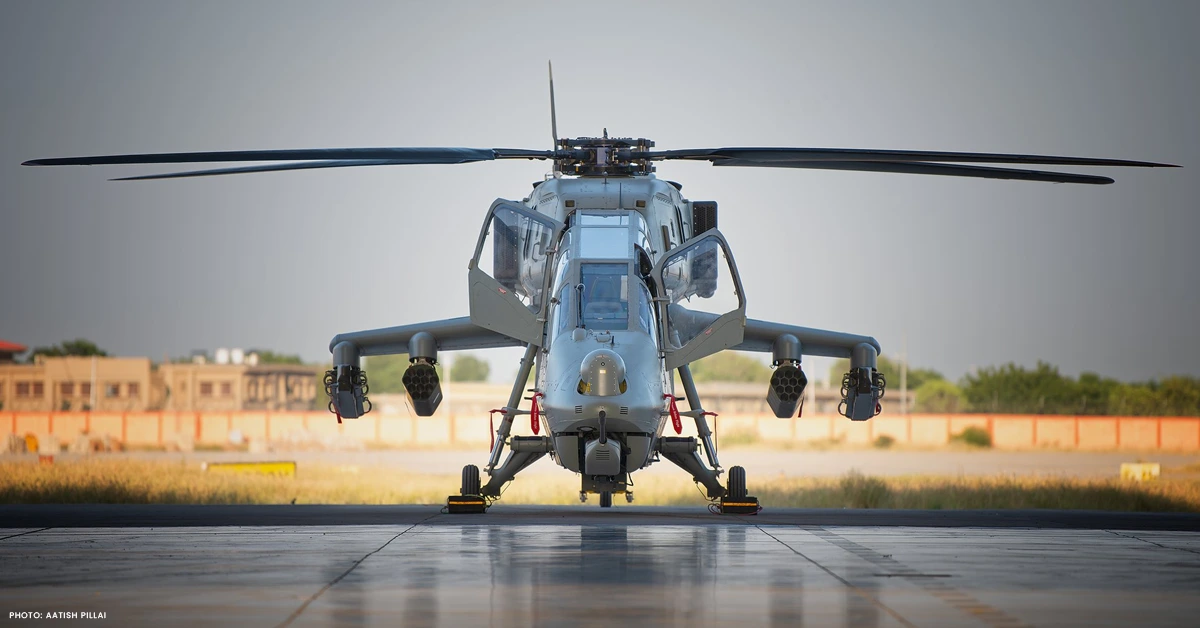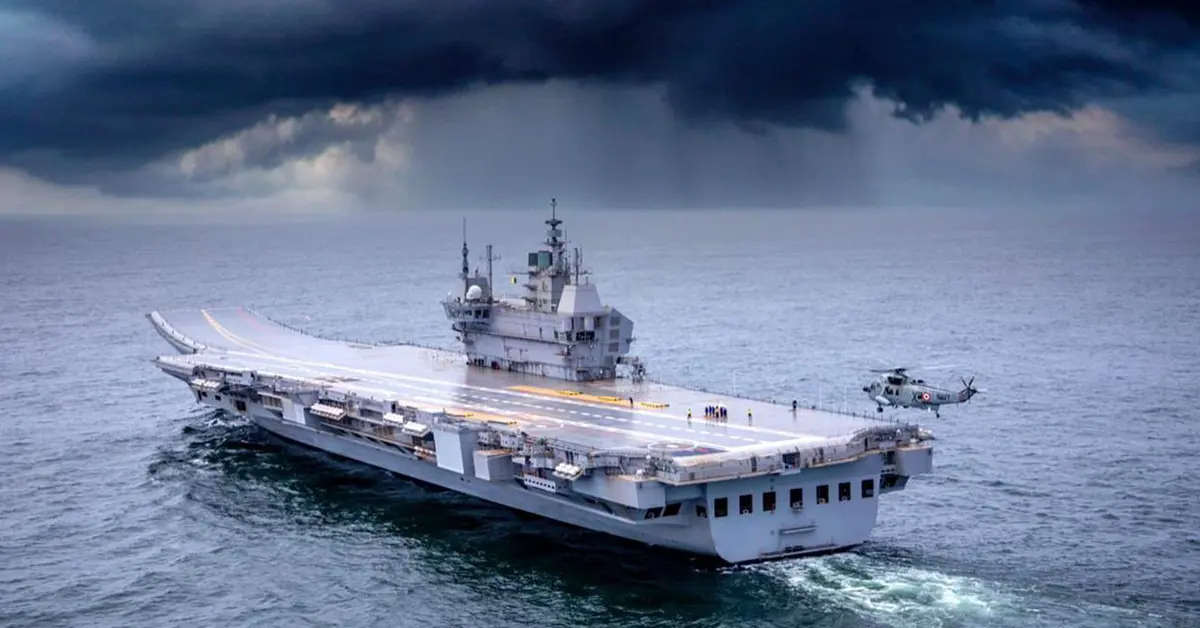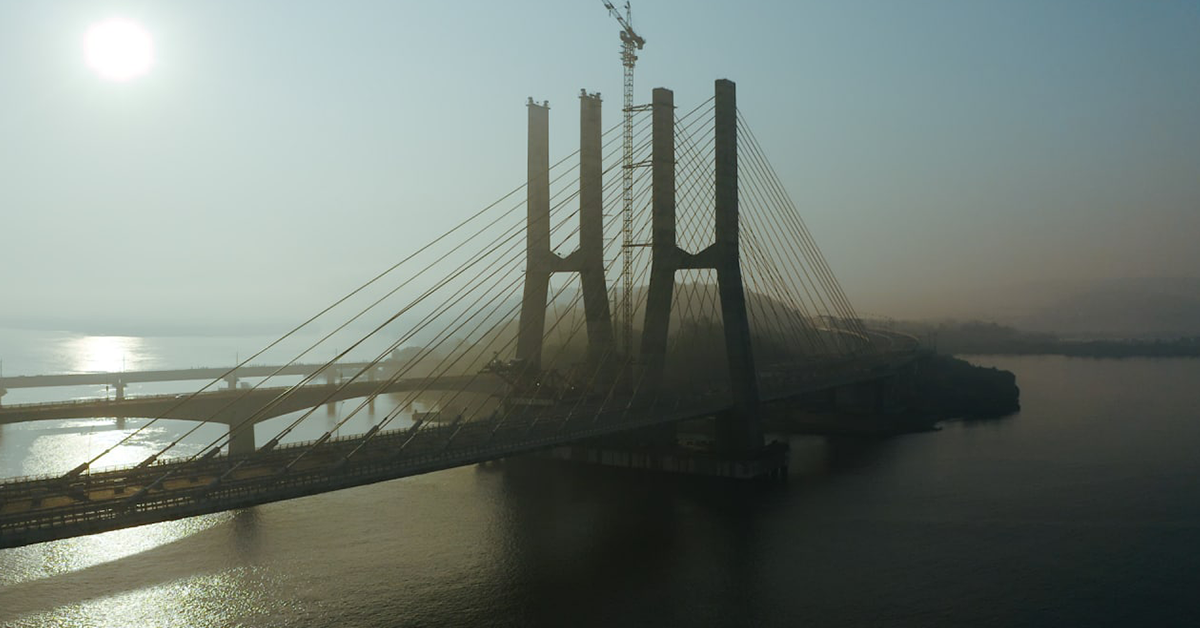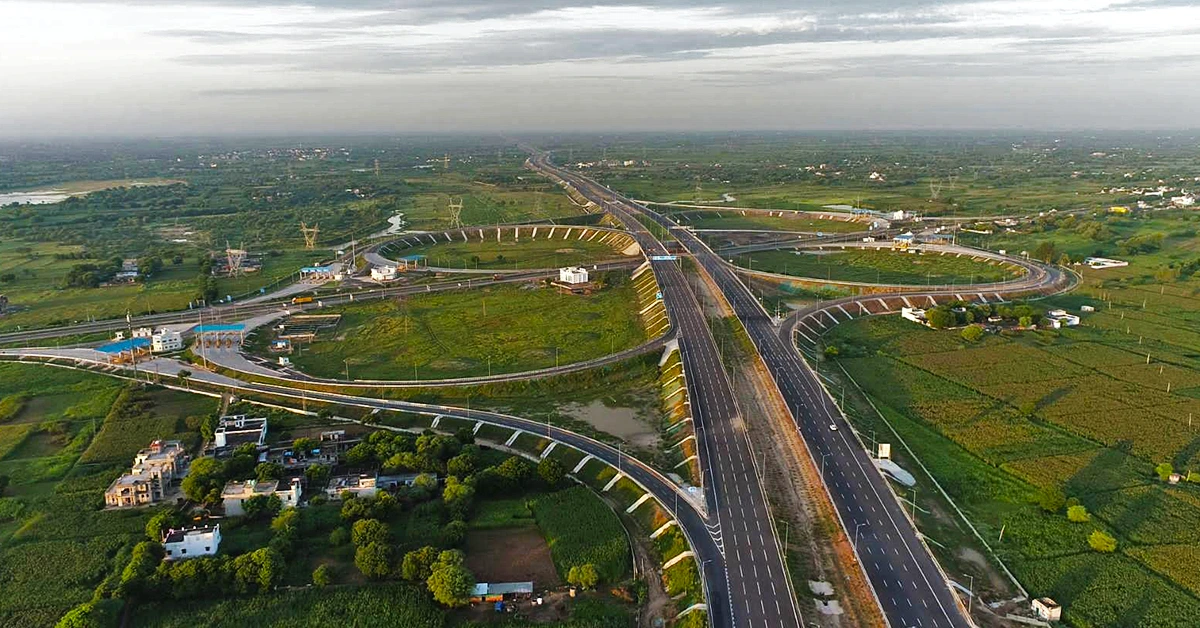Under Narendra Modi's visionary leadership, India's space achievements have surged. From Chandrayaan-3 to strategic successes like Mission Shakti, his support revitalized India's space sector. Modi's focus on private partnerships and innovation ignited growth, as seen in skyrocketing startup numbers and investments. India's ascent in space technology under his guidance marks →Read More →
Mumbai Trans Harbour Link (MTHL): Transforming Maharashtra’s Destiny
The Mumbai Trans Harbour Link (MTHL) inauguration by Prime Minister Narendra Modi on January 12, 2024, after 60 years of delays, marks a transformative phase. Under Devendra Fadnavis’s leadership, the project overcame hurdles, becoming India’s longest sea bridge. With advanced features, sustainable engineering, and Fadnavis’s visionary outlook, MTHL is set to reshape Maharashtra’s destiny, fostering economic growth and connectivity.
Read Time: 10 minutes
History: “हम जिसका शिलान्यास करते हैं, उसका उद्घाटन भी करते हैं”, said Narendra Modi. After 60 years of delays by Congress governments, the Mumbai Trans Harbour Link (MTHL) inauguration by Prime Minister Narendra Modi on January 12, 2024, marks the beginning of another transformative phase for Mumbai. The project, a mega transport infrastructure initiative, took almost 60 years to materialize, facing numerous challenges, re-drawings, and unsuccessful bids. The concept of a bay crossing bridge between Greater Mumbai and the mainland was first introduced in 1963. Despite its inception, the project languished for decades, only experiencing a revival in the late ’90s. However, between the ’90s and 2011, the Congress government shelved the project, placing it in cold storage where it remained for decades.
The extensive delays in the project were a result of the Congress governments’ disinterest in infrastructure development. Their primary focus always was on lining their own pockets, showing a blatant disregard for the well-being and future of the people. They always prioritized personal enrichment over public welfare, actively seeking new ways to exploit and amass wealth at the expense of progress and public interest.
Under the leadership of Devendra Fadnavis, the project experienced a remarkable revival in 2015. Swiftly obtaining clearances by 2016, Prime Minister Narendra Modi ceremoniously laid the foundation stone on December 24, 2016. The adept coordination continued as, in 2017, Devendra Fadnavis secured funding from JICA, with the unwavering support of Prime Minister Narendra Modi, who promptly provided a counter-guarantee for the JICA loan. This collaborative effort showcased effective leadership, securing eighty percent of the funding from JICA at a concessional interest rate, and the remaining twenty percent sourced from MMRDA, reflecting their commitment to advancing crucial infrastructure projects for the benefit of the people.
Fifty-three years after conception, after four attempts at tendering over twelve years, and fifteen Chief Ministers, Fadnavis had finally managed to get all boxes ticked to launch the project. The project commenced in 2018, marking the end of a prolonged and tumultuous journey.
Bridging Horizons: The MTHL, also known as Atal Setu in honor of former PM Atal Bihari Vajpayee, is India’s longest sea bridge, and 12th longest sea bridge in the world. MTHL stretches across 21.8km, featuring a 16.5km extension over the sea and about 5.5 km on land. With a construction cost of ₹17,840 crore, the MTHL is poised to make a profound impact on the Mumbai Metropolitan Region (MMR).
Originating from Sewri in Mumbai and reaching its terminus at Nhava Sheva in Uran taluka, Raigad district, the MTHL is set to significantly reduce travel time between Mumbai and Navi Mumbai to a mere 20 minutes, compared to the current 2 hours. This sea bridge will establish crucial connections with the Mumbai-Goa Highway, Vasai and Virar, Navi Mumbai, and Raigad districts. Additionally, it will provide a direct route to the Navi Mumbai international airport, serving as a pivotal second airport after the completion of the Navi Mumbai Coastal Road. Enhancing connectivity between Mumbai Port and Jawaharlal Nehru Port, the MTHL’s Chirle-end 6.5km elevated road shortcut is expected to amplify traffic to Pune, reducing the 15km journey from Chirle to Palasphe Phata from 25 minutes to just 5 minutes.
The bridge will handle around 70,000 vehicles daily, with motorbikes, autorickshaws, and tractors prohibited. Cars, taxis, light vehicles, minibuses, and two-axle buses will have a speed limit of 100 km/h, reduced to 40 km/h on the bridge’s ascent and descent.
Seamless Journeys: MTHL involved more than 14,000 skilled workers, with over 5,000 working at any given time. The project used 177,903 metric tonnes of steel and 504,253 metric tonnes of cement. A testament to engineering prowess, its construction utilized steel weighing as much as 500 Boeing airplanes and 17 times the weight of the Eiffel Tower. The structural steel employed is four times that of the Howrah Bridge, and the concrete used is six times that of the Statue of Liberty in the US.
Larsen & Toubro, Tata Projects, IHI Corporation (Japan), Daewoo Engineering, and Strabag Infrastructure (Austria) executed the project, incorporating advanced technologies. The bridge is paved with stone matrix asphalt, ensuring a durable and weather-resistant surface with benefits like increased pavement life, reduced traffic noise, improved skid resistance, and enhanced pavement marking visibility. Motorists can enjoy a pothole-free ride, and the SMA pavements are fully recyclable at the end of their service life. Motorists will have real-time information through dynamic displays, which includes messages for traffic congestion and alerts in case of accidents or emergencies.
The MTHL will feature an Open Road Tolling (ORT) system, eliminating the need for traditional toll booths and boom barriers. Similar to the system successfully implemented in Singapore, ORT allows for toll collection without vehicles having to come to a complete stop. Advanced scanners and cameras identify moving vehicles and facilitate electronic toll collection. This system offers several advantages, including an improved commuter experience, enhanced fuel efficiency, increased safety, and cost-effectiveness. High-definition cameras across the MTHL monitor traffic and aid emergency response. The system includes video incident detection for issues like stalled vehicles, wrong-side driving, and speed violation detection for those exceeding the 100 km/h limit.
Sustainable Engineering: The bridge incorporates cutting-edge technology, utilizing orthotropic steel decks for expansive spans and river circulation rings to minimize sound and vibrations, safeguarding marine life.
The lighting system, consisting of 1,212 units, is specifically designed to illuminate only the carriageway, preventing any luminous spill onto the sea. This meticulous design aims to avoid disturbing the aquatic environment. The sturdy poles are built to withstand the rigors of deep-sea weather, including strong winds and potential lightning damage, with galvanized construction employed to prevent rust and corrosion.
Along a 6-kilometer stretch, the MMRDA has erected visibility and noise barriers. These vision barriers conceal the view of the Bhabha Atomic Research Centre (BARC) from the MTHL, while noise barriers aim to protect the migration routes of flamingos and other migratory birds at the Sewri mudflats. Further, a 5.6km temporary access bridge, constructed for MTHL development, will be repurposed into an observation deck for bird watching.
Even the construction process went beyond just development of the bridge, preserving important natural areas like mangroves and mudflats, crucial for migratory birds. The sea bridge has been made using noise silencers on machines to help maintain a peaceful environment, protecting marine life and flamingo habitats. Debris management technique was installed so that the waste does not fall into the sea and affect marine life.
Further, it has been estimated that the use of the bridge will lead to savings of one crore liters of fuel per year and cut back CO2 emissions by over 25,000 million tons.
Mastermind Fadnavis: The Mumbai Trans Harbour Link is a game-changer!
The MTHL is anticipated to attract commercial development and accelerate economic activities in its far end, significantly impacting the MMR. The bridge is projected to contribute to achieving a $0.25 trillion economy for the MMR. Reducing travel times to just 20 minutes between Mumbai and Navi Mumbai, regions like Panvel and Ulwe are poised for rapid growth.
Under the visionary leadership of Devendra Fadnavis during his tenure as Chief Minister, the ambitious concept of a ‘Third Mumbai’ in Ulwe took shape. Fadnavis, now Maharashtra’s deputy chief minister, displays unwavering optimism, firmly believing that the realization of Third Mumbai through MTHL has the potential to catapult Mumbai’s economy from its current $140 billion to an impressive $250 billion. This visionary initiative spans a multitude of developments, including not only diverse residential projects (both luxury and affordable) but also dynamic commercial complexes, state-of-the-art data centers, thriving hubs for multinational corporations, banks, and financial companies, alongside expansive knowledge parks. Fadnavis’s foresight is set to transform Third Mumbai into a comprehensive and vibrant economic hub, making a significant impact not only on Maharashtra but also contributing to India’s economic growth.
Tags: The New India
Share this article:
Leave a Comment
Recommended For You
Prachand — India’s first Made in India Light Combat Helicopter is another milestone towards self-reliance in the defence sector and Atmanirbhar Bharat initiative led by Prime Minister Narendra Modi.
The first ever aircraft carrier to be indigenously designed and constructed, the much-awaited INS Vikrant was launched by Prime Minister Narendra Modi on 2 September 2022.
The biggest irrigation project in Uttar Pradesh — The Saryu Canal National Project, which will benefit 25-30 lakh farmers in nine eastern UP districts was dedicated to the nation by Prime Minister Narendra Modi, in presence of Chief Minister Yogi Adityanath on 11 December 2021.
The protest against converting Sammed Shikharji into a tourist destination must also start a debate that enables restoration of sanctity of India's sacred spaces.
In a historic moment for India, Prime Minister Narendra Modi flagged off MV Ganga Vilas, the world's longest river cruise which makes a journey through India and Bangladesh, showcasing the rich heritage and culture of both countries.
The Bogibeel bridge over the Brahmaputra will boost defence logistics along the China border and increase the economic activity of the long-time neglected Northeast region.
India's widest and second largest cable-stayed bridge in India, the Zuari bridge in Goa will enhance the economic activity of the state.
India’s longest expressway — the Delhi Mumbai Expressway is India’s quantum leap into the future, displaying Narendra Modi's resolve towards building a New India. Modi government’s emphasis on building an excellent road infrastructure as an engine of growth, development and connectivity in the New India shall bring opportunities, growth and →Read More →
Atal Setu or the Mandovi River Bridge, a dream project of Goa Chief Minister Manohar Parrikar is expected to decongest Panaji traffic and serve as a bypass for those who want to travel from north to south without entering Panaji.


